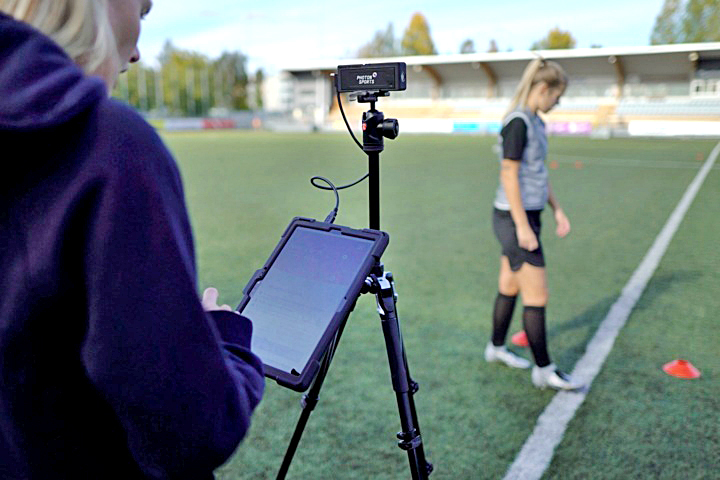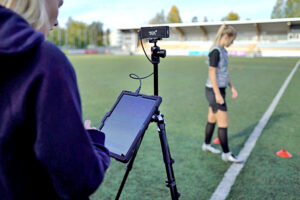Photon Sports has made a breakthrough in sports technology by coming up with a hi-tech solution for faster, accurate and affordable measuring and tracking of an athlete’s speed, agility, and quickness
At a time when everything runs on data, technology has interwoven itself in the world of sports as well. Gone are the days of physical tests when it comes to assess a player’s development and performance. Thanks to a unique 3D technology—developed by Jonas Sjöberg, one of Europe’s leading experts in Optical System Design and his childhood friend—measuring athletic performance has become faster and affordable.
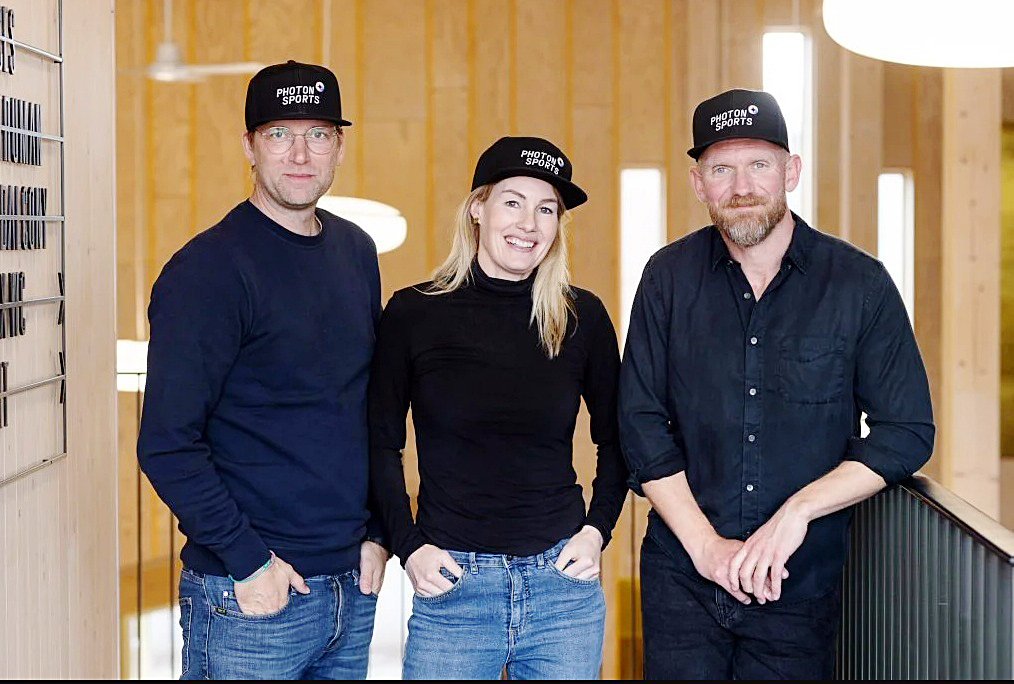
Teaming up with former elite soccer player Hanna Marklund, Jonas came up with the mobile technology under the brand name of ‘Photon Sports’—making a breakthrough in sports performance—for enabling affordable, fast and easy physical performance analysis for everyone.
‘Photon Sports’ now offers the first-of-its-kind technology for measuring and tracking speed, agility, and quickness of athletes and sportspersons. The technology has been well received by top leagues and teams in Sweden, Belgium, and Norway among others, as well as schools and universities.
Designed with the needs of players and coaches in mind, Photon Sports 3D technology offers a faster and smoother testing experience, with results available in barely a few seconds. This mobility revolutionises the way physical tests are conducted, giving coaches and trainers the ability to test players on the spot and make informed decisions about player development and performance.
Speaking about the technology, former football player in Swedish National Team Michael Almebäck—who also looks after the customer relations at Photon Sports—explained how frequent testing can give a better insight to the physical development of a player over the time.
“As a former professional football player, I would have dreamt of having my baseline data before an injury. I believe that this would have helped me minimise the risk of getting re-injured when returning to full participation post-injury. To also have the possibility to perform frequent testing would have given me a better insight in my physical development over the time in comparison with only testing 1 to 2 times per year,” he added.
At Photon Sports, various aspects of the sportsperson’s performance can be assessed including sprint assessment, jump evaluation, and agility assessment and measuring change of direction abilities. “When I was playing, I would really have appreciated the fast and easy tracking of speed, agility, and freshness that Photon Sports offers. It would have been very motivating with instant feedback and key data available. With clear insights, my training could have been optimised so I could become the best version of myself”, said Hanna Marklund, partner at Photon Sports and former football player in the Swedish National Team.
The highly mobile and portable testing equipment can be taken to training camps. This opens for more frequent follow-ups to create a reliable baseline on athletes over time, which is of high relevance when it comes to return to the sports after injuries.
“Maximum speed, explosive accelerations, and decelerations are important parameters in today’s elite football and of great importance to continuously develop and evaluate. Photon Sports’ technology makes it possible to easily follow up the progress and thereby give valuable information in the process of optimising training strategies,” said Dan Fransson, Sports Scientist, Elfsborgs IF and Gothenburg University.
Data collection is already a very important part of sports performance technology, but it is also time-consuming for physical coaches. Photon Sports relieves this burden by offering a cloud-based solution that automatically syncs and calculates testing results to the web. This includes sprint curves, trend lines and KPIs.
Key parameters
Change of Direction
Change of direction (COD) is a crucial part of all sports. It’s an important part of measuring an athlete’s agility and quickness. In football, COD is particularly important as players must be able to quickly change direction while maintaining their balance and control of the ball. Studies have shown that 85% of all sprints in a football game include nonlinear movements. Photon Sports is one of the few sports performance technology solutions that allow for precise, easy, and repeatable measurement of COD. This is achieved by tracking a player’s acceleration and deceleration during a test. Measuring a player’s ability to decelerate gives an idea of their control and quickness in changing direction. In addition to football, COD testing is beneficial in a variety of other sports, including basketball, American football, and field hockey among others, where players must be able to change direction quickly and effectively.
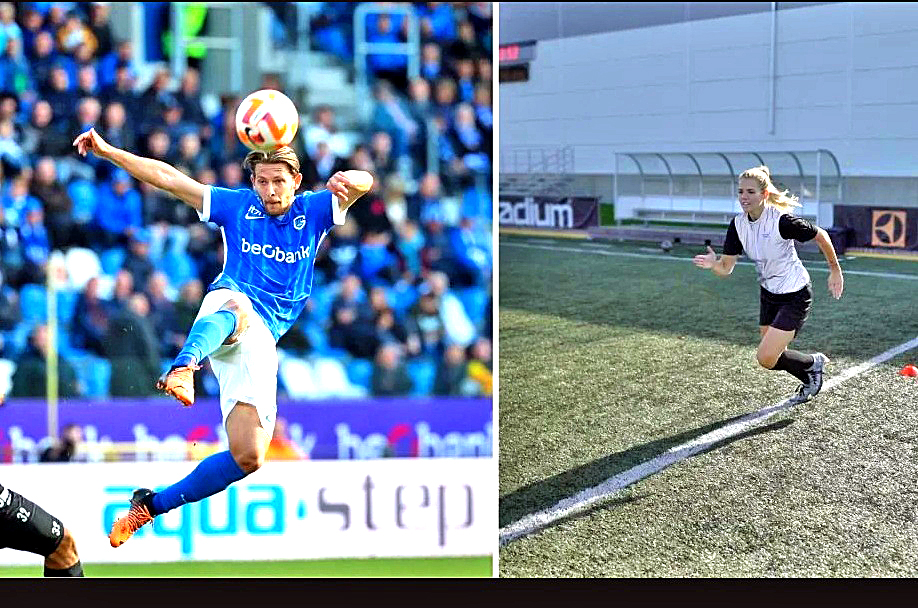
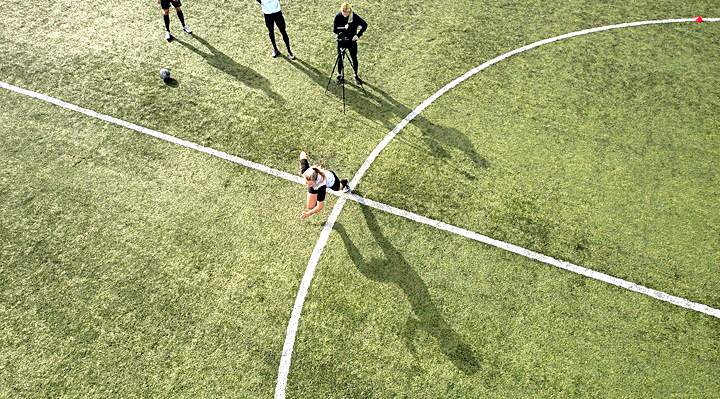
Forced Velocity Profiling
Force Velocity Profiling (FVP) is another critical aspect of sports performance analysis. One of the key benefits of FVP is that it provides a comprehensive view of an athlete’s performance, beyond just measuring speed or strength. It takes into account the force an athlete can generate, as well as their ability to control and utilise that force effectively. This information can be used to create specific training programs aimed at improving an athlete’s performance. With Photon Sports, FVP data can be collected and analysed quickly and accurately, allowing coaches to track player progress and identify areas for improvement. More and more studies have shown the importance of FVP in both Return to Play (RtP) and physical development aspects. Together with Bram Swinnen, Head of Performance at Belgian top club KRC Genk, Photon Sports has developed a specific Forced Velocity Sled-push test for accessing players’ Max force drop over time to reduce the risk of hamstring injuries throughout a season.


